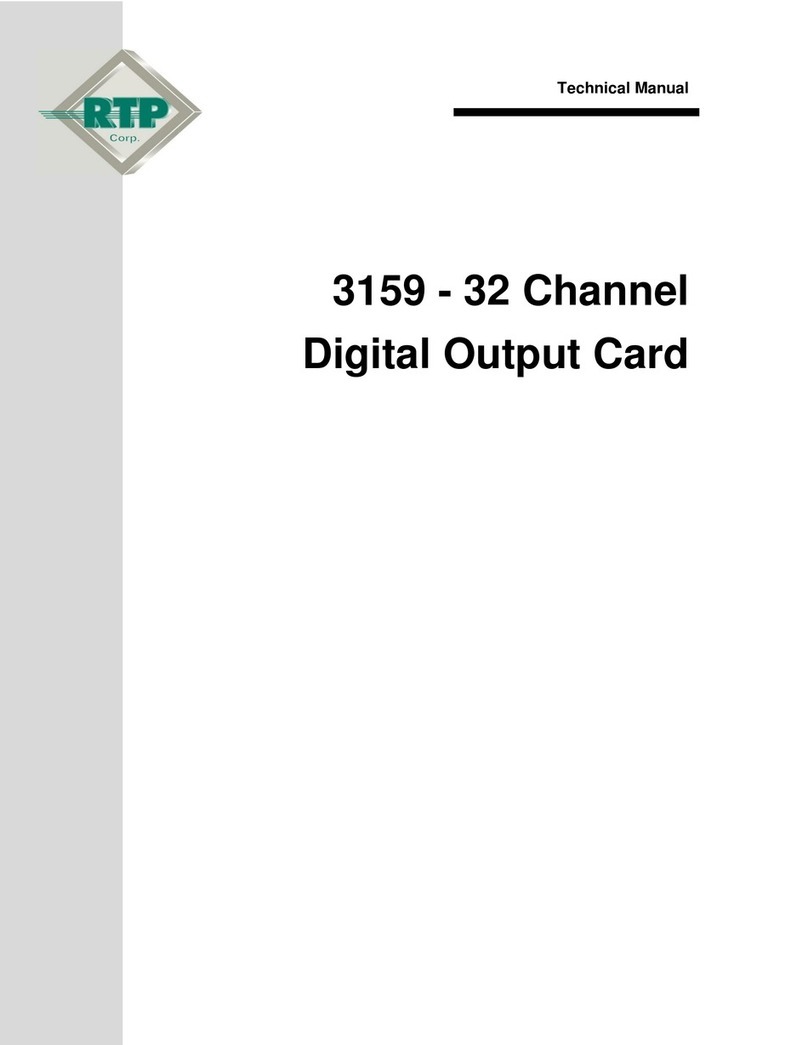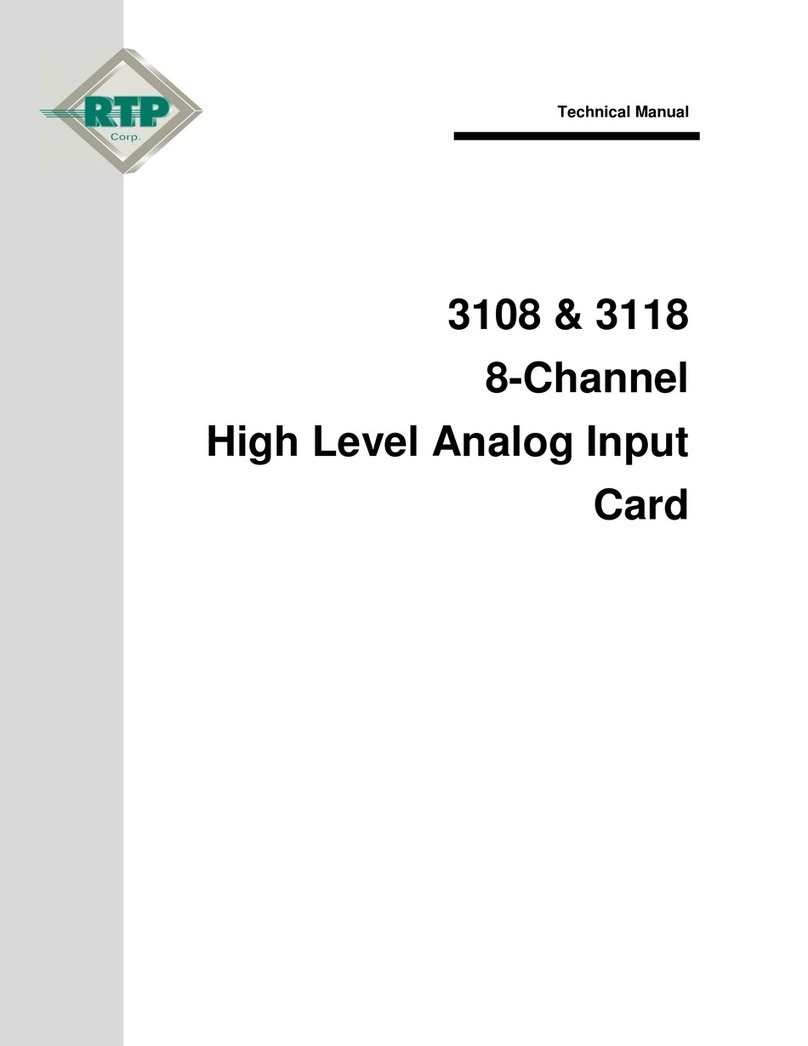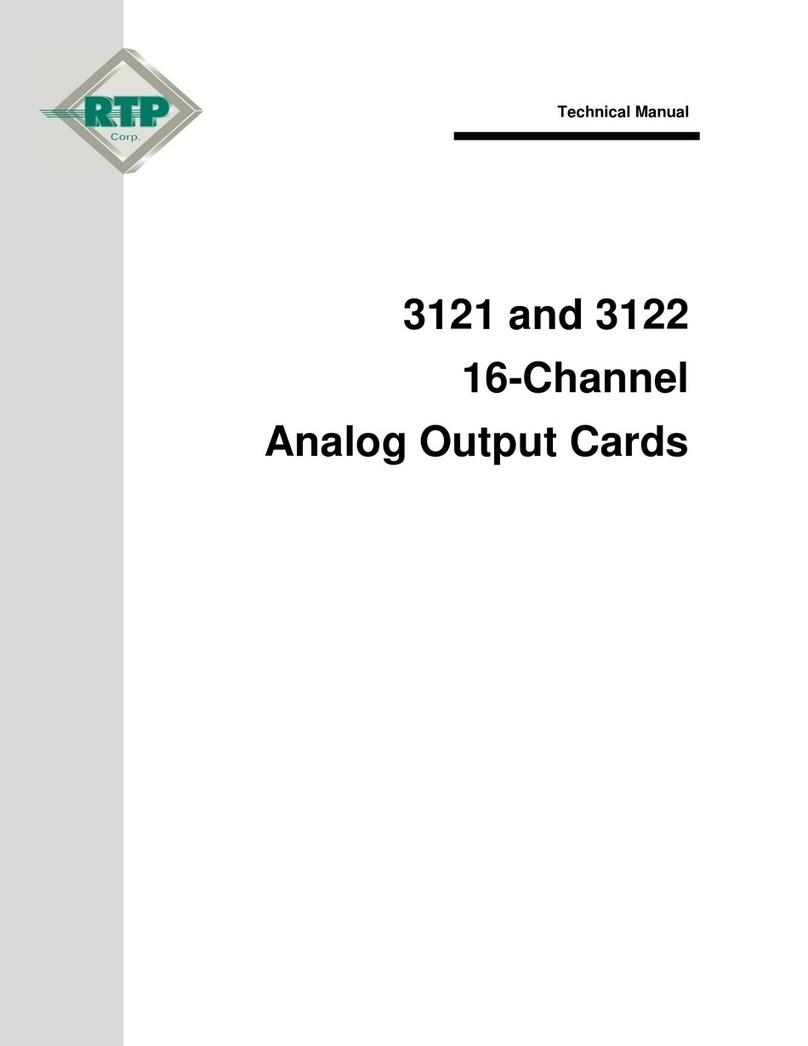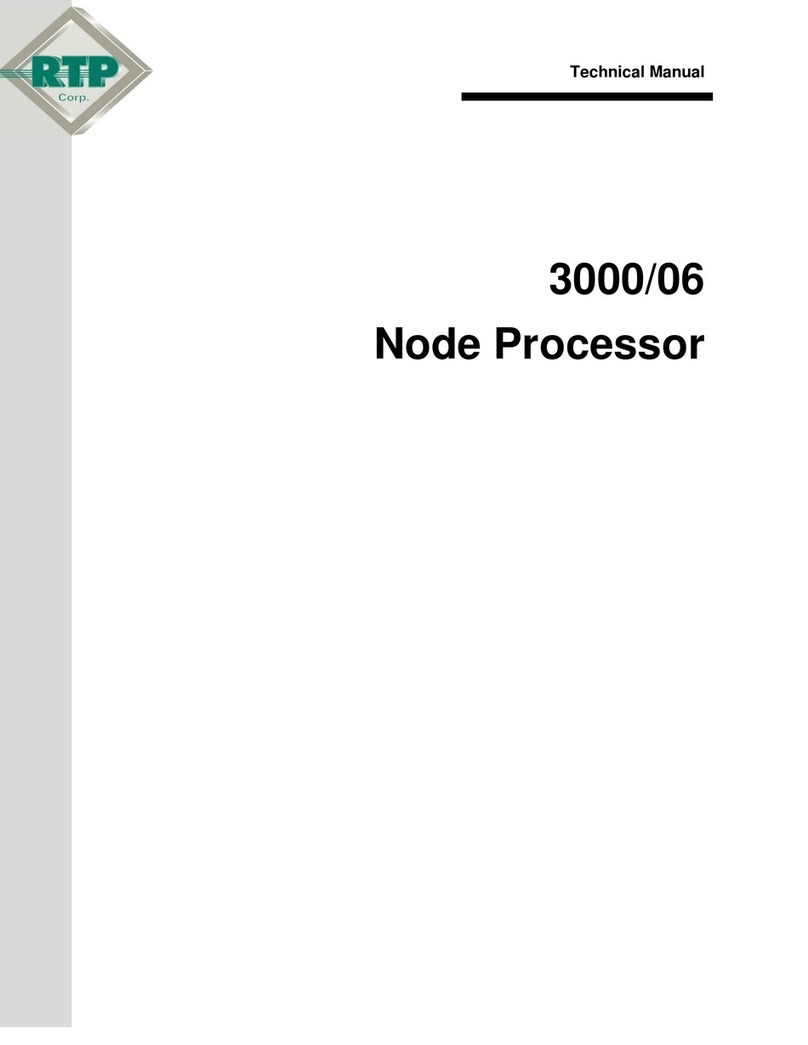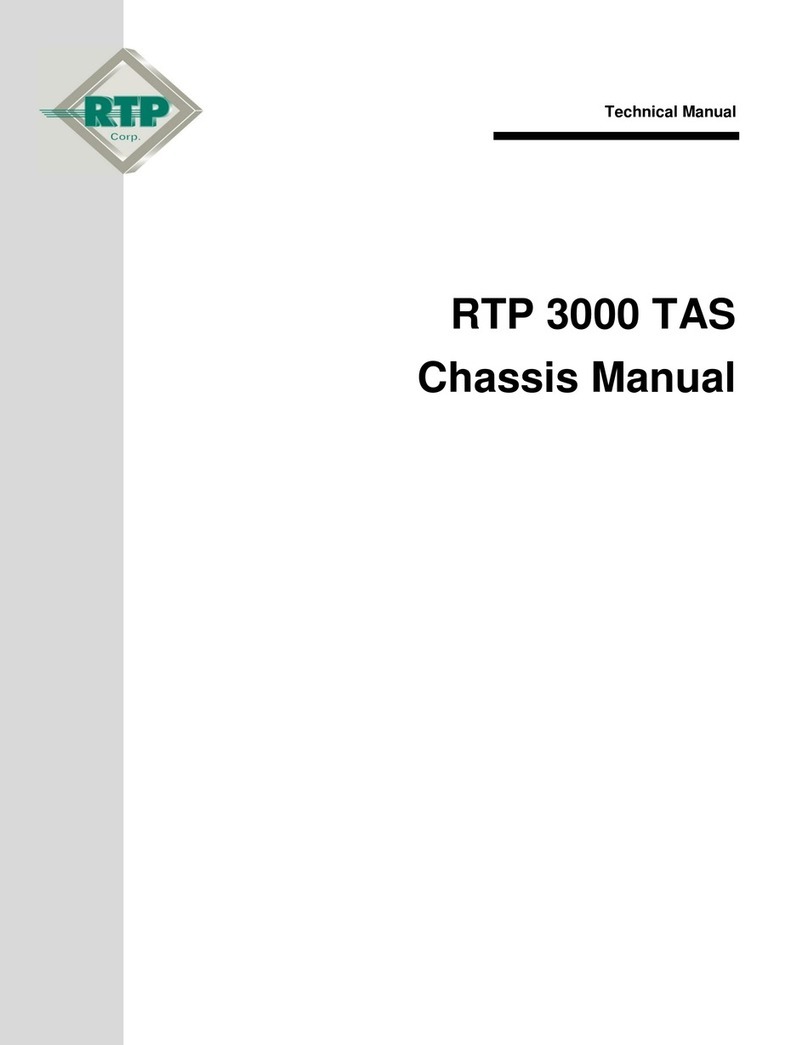
6
Contact Bounce: 3 ms maximum
Backplane to Card Output Delay Time:
< 22 ms (ON to OFF or OFF to ON)
Relay Valid Readback: 35 ms maximum
Maximum relay cycle speed 1800 operations per hour at full load
Relay Life Expectancy: 100000 cycles at full load
300000 cycles at 1.5 A load
Suppressor networks for
inductive kickback: Diode protected on 3099/12 and snubber protected on
3099/13 termination modules.
Output behavior: During interruptions of MPU control, voltage dips and
interruptions and power up/down sequences, all channels
will be de-energized to the OFF state.
Channel Self Tests: All channel relay drivers are tested within 16 Node Processor
scan cycles.
Maximum time for testing: < 350 s
Watchdog Timers:
Programmable 150 ms
Fixed 1.6 s maximum
Termination Module Connectors: 37 pin D-Sub connector for use with the 3055/00 Power
Digital Cables. These cables have a diameter of 0.5 inches
(1.27 centimeters) with a minimum bend radius of 4.6 inches
(11.69 centimeters).
Termination Modules:
Sinking (Breaks the ground, each channel powered independently):
24 VDC 3099/12-101 Single Termination Module
3099/12-001 Triple Redundant Termination Module
24 - 230 VAC 3099/13-101 Single Termination Module
3099/13-001 Triple Redundant Termination Module
Sourcing (Breaks the positive, each channel powered independently):
24 VDC 3099/12-100 Single Termination Module
3099/12-000 Triple Redundant Termination Module
24 - 230 VAC 3099/13-100 Single Termination Module
3099/13-000 Triple Redundant Termination Module
Sourcing (Breaks the positive, all channels powered common):
24 VDC 3099/12-102 Single Termination Module
3099/12-002 Triple Redundant Termination Module
24 - 230 VAC 3099/13-102 Single Termination Module
3099/13-002 Triple Redundant Termination Module
User Replaceable Fuses: Littelfuse type 0665 002.HXSL or
Wickmann type 37412000410






